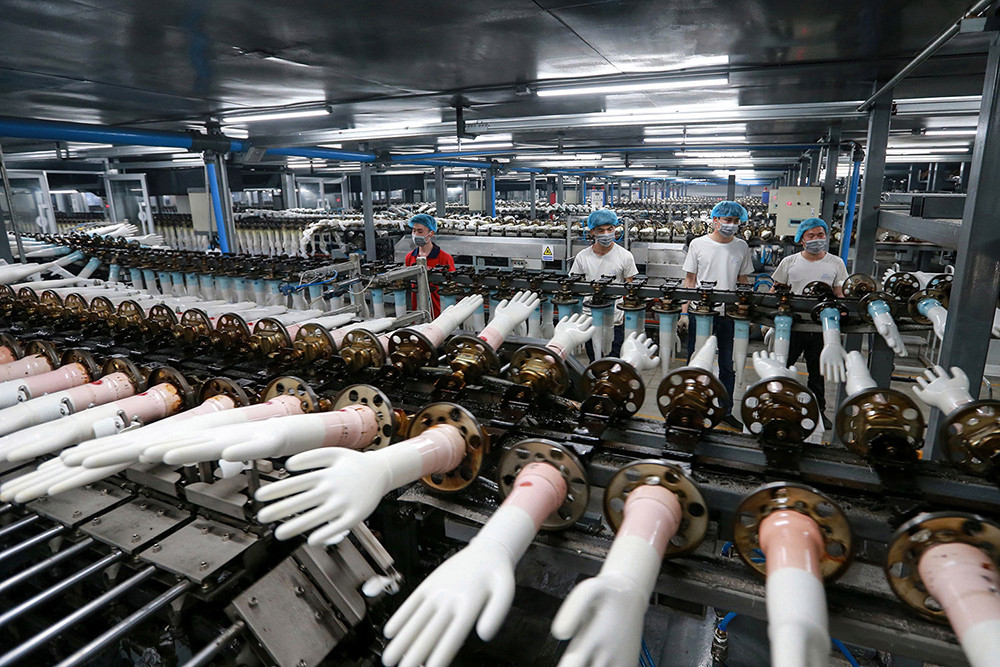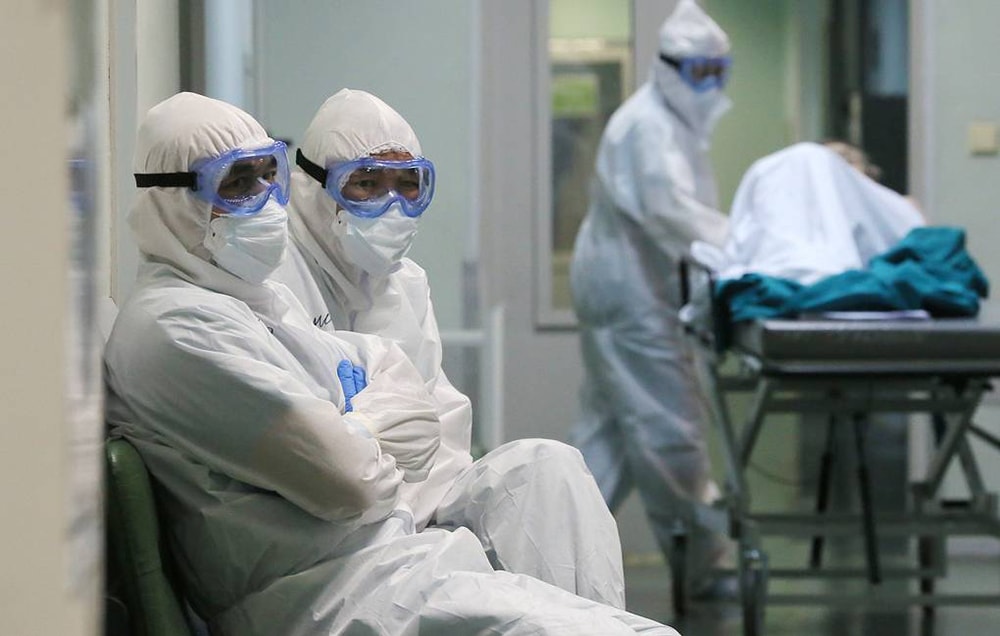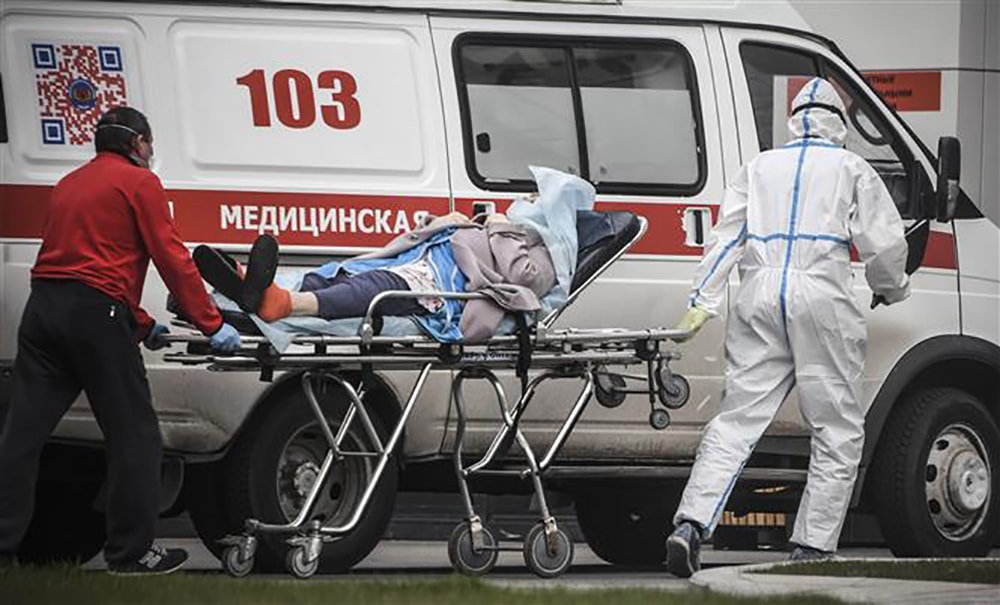The world last week: Behind the political calculations
(Baonghean) - The US is promoting the shift of supply chains away from China, by imposing many new tariffs, calling on companies to return to the US. Russia has become the second largest Covid-19 epidemic area in the world, but the mortality rate is only under 1%, much lower than other countries. Those are the international issues that have received attention in the past week.
Promoting supply chain shifts
On May 14, US President Donald Trump threatened to impose new tariffs on US companies that manufacture goods abroad, which is also one of the "motivations" for companies to move production back to the US. Most notably, the move shows that the US government is accelerating the shift of supply chains out of China and setting up new trade barriers. The competition between the US and China is heating up.
 |
| The Trump administration is trying to separate supply chains from China. Photo: Economic Times |
The US wants to use the pandemic to decouple China from the global economy, promote manufacturing in the US and redesign the global economy, on the grounds that “you cannot have China as part of the system because of their behavior”. However, the US’s desire to isolate China, both economically and politically, is not a simple matter. China is now the second largest economy in the world. Moreover, the Covid-19 pandemic has highlighted the important role of China when the US and many of its allies are dependent on cheap products and supply chains controlled by China, especially generic drugs.
According to the US Food and Drug Administration (FDA), China is now the second-largest exporter of pharmaceuticals to the US and the largest supplier of medical devices. The US currently imports almost all common antibiotics and over-the-counter painkillers from China, along with drugs used to treat HIV, depression, Alzheimer’s and other diseases. Therefore, supply chain constraints that come with disruptions in global transportation networks due to the pandemic, and increased demand for essential medicines around the world, could endanger the health of US citizens.
In an editorial published on the online newspaper of Xinhua News Agency, a warning was issued: If China retaliates against US claims of blaming China for the spread of the epidemic by cutting off pharmaceutical exports, the US will sink into the hell of a new wave of Covid-19.
Currently, US manufacturers meet 70% of current demand for pharmaceuticals. However, building new facilities in the US could take 5-8 years, raising concerns. Therefore, officials need to have a realistic plan before starting to consider alternatives.
 |
| Workers produce medical gloves at a factory in eastern China. Photo: AFP |
Among the regions the US is currently targeting, the Middle East could be an attractive option. Partner countries like Jordan and Egypt have a lot of potential for pharmaceutical manufacturing capacity. Both countries have cheap labor. In addition, the US is trying to create an alliance of trusted partners, which officials call an “economic prosperity network”. It will include companies and social groups operating on a common set of standards from digital business, energy and infrastructure to research, trade and education. US Secretary of State Mike Pompeo said he is working with Australia, India, Japan, New Zealand, South Korea and Vietnam to move the global economy forward.
Exceptions in epidemics
Over the past week, Russia has seen a rapid increase in Covid-19 cases, with over 10,000 new cases per day, making Russia the country with the second-highest number of infections in the world, after the United States. The big difference between Russia and other major epidemic areas in the world is the mortality rate. According to Johns Hopkins University, the mortality rate in the United States is 6%, in Brazil is 7%, while Western European countries such as Italy, France, Belgium, Spain and the United Kingdom are over 10%. However, in Russia, with more than 2,200 deaths, the mortality rate in this country is only 0.9%, making Russia an exception among the countries badly affected by the epidemic. This immediately attracted the attention of medical experts and scientists around the world, who wanted to know why the pandemic could not take the lives of many Russians, as it did in many other major epidemic areas.
Dr. Elena Malinnikova, the head of infectious diseases at the Russian Ministry of Health, has a simple explanation: Russia's low mortality rate is due to the early detection of cases and the willingness of Russians to see a doctor soon after symptoms appear. Meanwhile, Russian media reports that more than 60% of the country's cases are in the capital Moscow, which has a younger and healthier population than rural areas. "Regardless of the reason, the extremely low mortality rate is quite surprising," said Kent Sepkowitz, a physician and infection control specialist at Memorial Sloan Kettering Cancer Center in New York. "And you have to compare different factors to understand what's going on."
 |
| Many Russian medical staff have felt overwhelmed as the number of new infections increases daily. Photo: TASS |
The pandemic broke out in Russia at the same time as Brazil, but the difference between Russia and Brazil is huge, especially in terms of widespread testing. Russia has tested more than 41,000 people per million people, while Brazil has tested more than 3,500 people, and the US has tested just under 31,000.
Testing is one of the main reasons for Russia's exceptional performance, but other factors that affect the death rate include gender, age, underlying conditions such as heart disease, chronic lung disease, diabetes, and obesity. According to the World Bank, Russia has 15% of its population over 65, compared to about 25% in Italy and 16% in the US. Russia's lung disease death rate is also relatively low, at 14.5 per 100,000 people, compared to 26.6 in Brazil. Russia's obesity rate ranks 70th in the world, at 23%, compared to 12th in the US at 36%.
Many opinions say that although the above rates of Russia are much lower than other countries, it is not enough to make the death rate of this country so strangely low. Experts assess that the difference in Russia may lie in the way deaths due to Covid-19 are counted. They ask the question, if a person with heart disease dies from Covid-19, how will Russia determine the cause of death? A person who dies from Covid-19 can still be determined by many different causes.
A study published in the Financial Times on May 11 found that the actual death toll in Russia was 70% higher than reported. On May 12, Russian Deputy Health Minister Tatyana Golikova denied that the country was undercounting deaths. On May 13, the Russian Health Ministry affirmed that it always adhered to international statistical principles in classifying Covid-19-related deaths, which means listing all causes of death.
 |
| Medical staff transfer a Covid-19 patient to a hospital in Moscow, Russia. Photo: AFP/TTXVN |
Vladimir Shkolnikov, a demographer at the Max Palnck Institute for Demographic Research, said Moscow’s record-low death rate could be the result of a late onset of the pandemic in Russia, meaning the death rate could still rise in the coming weeks or the country could be on a downward trend like Austria, Finland, Norway and Germany.
With the complicated developments of Covid-19, Kent Sepkowitz - a physician and infection control specialist at Memorial Sloan Kettering Cancer Center in New York commented: "The Covid-19 mortality rate in Russia and around the world is determined not based on a common standard according to international agreements, but by reports from authorities - a product of political calculations".








